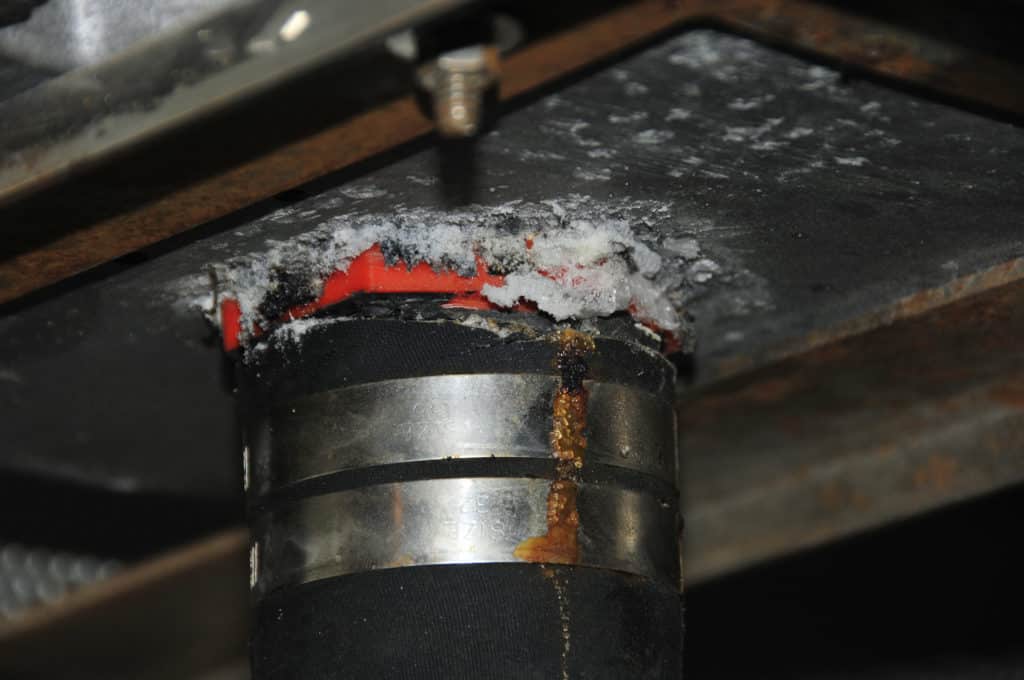
To better understand corrosion, check out a galvanic-series chart. It organizes metals from most noble (most corrosion-resistant, or cathodic) to least noble (least corrosion-resistant, or anodic). Depending on the source, the series might be organized with cathodic metals either at the top or bottom; the version included in the American Boat and Yacht Council Standards establishes the most-cathodic metals at the bottom, where the kings of corrosion resistance (graphite, platinum and titanium, among others) reside. At the top end of the series, the most corrosion-prone metals (magnesium, zinc and aluminum) will be found. The chart is available online with a simple search for “galvanic series.”
Aluminum is among the most corrosion-prone metals. This might seem counterintuitive in that aluminum is ubiquitous in the world of boatbuilding, and is used for everything from spars and outboards to deck hardware and even complete vessels. In fact, it’s also used as a sacrificial anode, which is telling. Aluminum, of which there are many alloys, is a metal of many contradictions.
Aluminum most commonly falls prey to two types of corrosion: galvanic and poultice. Galvanic corrosion occurs when aluminum is placed in contact with another metal, establishing a galvanic cell; this can happen either directly or via a wire or other electrical connection, with both being immersed in an electrolyte. That’s straightforward enough, but a host of details are worthy of discussion in order to understand how this works.
Virtually every other metal — with the exception of zinc and magnesium — is more noble than aluminum, and as such they all will cause aluminum to corrode at varying rates when the two are in contact. The farther the other metal is away from aluminum on the galvanic series, the more rapidly the aluminum will corrode. Therefore, while stainless steel will cause aluminum to corrode when the two are in contact under these conditions, the rate is not especially quick, and as such, the two are considered compatible. On the other hand, copper and copper alloys, including brass and bronze, are located farther away from aluminum in the series, and are therefore far more harmful; they are considered entirely incompatible with aluminum. Installing a bronze sail track, for instance, directly on an aluminum spar, would be considered a serious corrosion error.
The electrolyte mentioned earlier is typically seawater; however, fresh water will also allow the reaction to occur, albeit at a slower pace. Furthermore, while immersion in the electrolyte completes the galvanic cell, it’s not essential; exposure to simple atmospheric humidity, spray or rain will suffice, once again at a slower pace. Galvanic corrosion can be prevented in one of two ways: by isolating aluminum from incompatible metals and/or by the use of sacrificial anodes.
The other malady to which aluminum is susceptible is called poultice corrosion. This is referred to as simple corrosion, in that no other metals are involved. When exposed to air, aluminum almost instantly develops a tough transparent coating that serves as a corrosion inhibitor. Even underwater, provided it’s not stagnant, aluminum is exposed to enough dissolved oxygen for this coating to form. If aluminum is starved of oxygen, however, and it remains exposed to moisture, the environment becomes ideal for the formation of poultice corrosion. Because the oxide coating cannot form without oxygen, the aluminum becomes active; it corrodes, and in the process forms a white byproduct called aluminum hydroxide, which resembles freezer-burned vanilla ice cream.
The most common conditions for poultice corrosion occur when stagnant water is trapped against aluminum, beneath blistered paint, under a gasket or insulator, beneath spreader boots, or even where it comes into contact with wood, which by its porous nature retains water. Other than painting, poultice corrosion is prevented by ensuring aluminum is continually exposed to oxygen.
Steve D’Antonio offers services for boat owners and buyers through Steve D’Antonio Marine Consulting www.stevedmarineconsulting.com.








